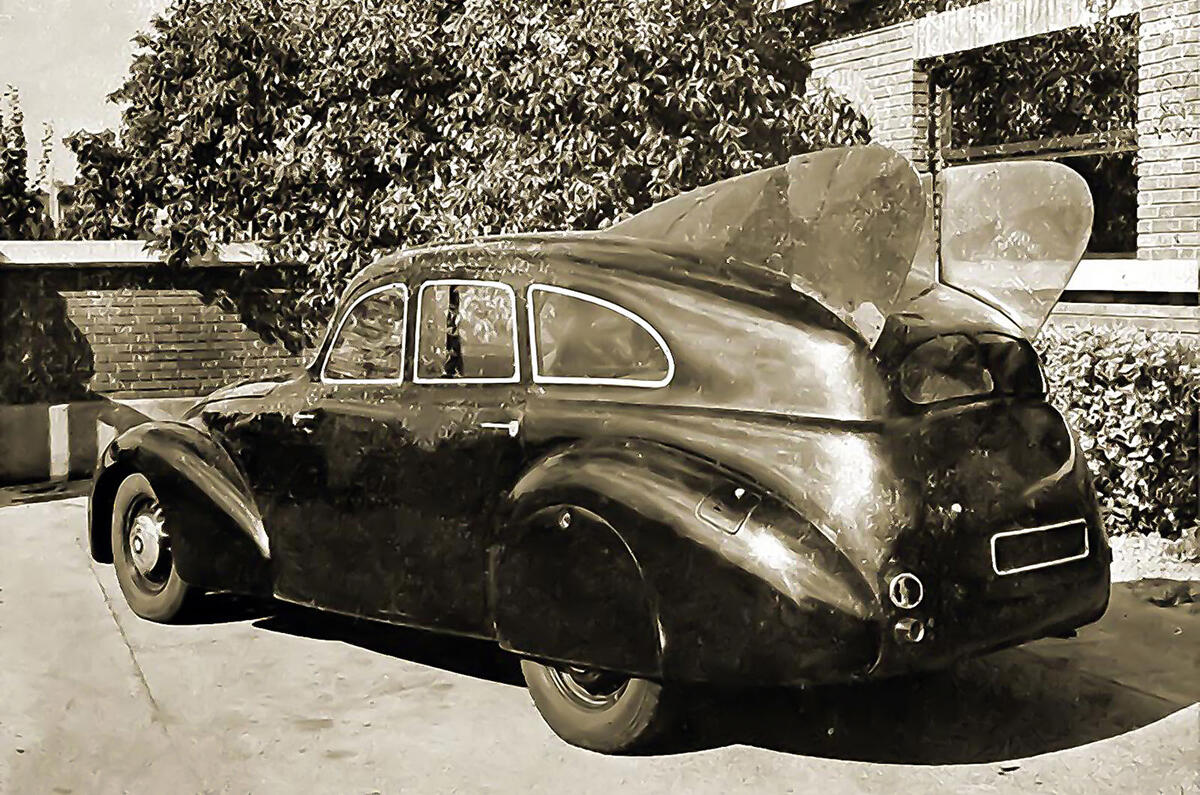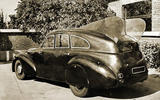During a tour of a French motor research facility in 1946, Autocar’s Paris correspondent, WF Bradley, happened upon two rare BMWs that had been seized from a Stuttgart research base at the end of World War 2.
The first was easy to identify – the 328 Berlinetta Touring that had been driven to BMW’s first and only victory in the Mille Miglia in 1940 – but the second was rather more curious. The work of prominent aerodynamicist Wunibald Kamm, the K4 was an experimental car built to investigate “streamlining, highspeed road-holding and economy of operation”, in the words of Bradley.
Bereft of solid detail, Autocar’s man gleaned what he could from the French engineers. “The body is both interesting and surprising, the surprising feature being an almost vertical rear panel,” he wrote. “The under surface is perfectly flat, the headlights are set into the wings, the windscreen is rounded into the side panels and the driving wheels are enclosed.”
It was certainly distinctive, broadly based on the luxurious 335 model and featuring front ‘suicide doors' that hinged off the B-pillars, as did the conventional rear doors.
The K4 had a drag coefficient of 0.196 at a time when contemporary saloons were around 0.5Cd, but experimenting with aerodynamics without the use of computational fluid dynamics meant research was a case of trial and error.
In order to make the car stable at speed, there had been experiments with fins. “A single fin, with or without slots, has little effect on stability and may even be detrimental,” wrote Bradley. “To be of any use, the fin must have excessive dimensions. Two fins without slots is no better. They have a tendency to deviate the vehicle from a straight course, and they have a lifting effect at the rear.
“The best results are obtained by a pair of slotted fins, really consisting of a fin and a rudder. The system is executed in Plexiglas.”
The K4 had a 3.5-litre six-cylinder engine, producing 88bhp. The engine was equipped with a dual carburettor, “part of which is used for normal running and the other part coming into action during the last movement of the throttle pedal”.
A four-speed gearbox driving the rear wheels was augmented by a planetary overdrive. “Road tests by the French revealed the remarkable advantages of the overdrive,” Bradley remarked.
Even though the engineers tested on roads comprising hills, heavy traffic and built-up areas, the K4 still returned impressive fuel economy. At 77mph and 1950rpm, it was measured at 24.4mpg; at 35mph and 900rpm it improved to 32mpg. “Certainly much better results could have been obtained on the German autobahnen,” mulled Bradley.








Join the debate
Add your comment
really!
Just goes to show what could be done but I guess to pamper to the vanity of the motorist we have been held back all this time.
SSanyyong Rodius
X6
Years behind BMW